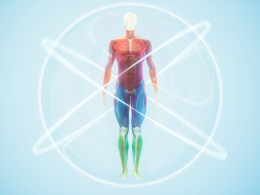The world of diets is vast and diverse, offering a range of choices to suit different preferences, lifestyles, and health goals. Among these dietary approaches, the pescatarian diet stands out as a flexible and balanced way of eating. In this article, we’ll dive into the pescatarian diet, exploring its principles and how it distinguishes itself from other dietary plans.
Understanding the Pescatarian Diet
The pescatarian diet is a plant-based dietary approach that incorporates fish and seafood while excluding other animal meats, such as beef, poultry, and pork. The core principles of the pescatarian diet include:
- Plant-Centric: Pescatarians prioritize plant-based foods, including fruits, vegetables, legumes, whole grains, nuts, and seeds. These foods make up a significant portion of their daily intake.
- Fish and Seafood: Pescatarians include fish and seafood as their primary source of animal protein. This may include fatty fish like salmon, trout, and mackerel, as well as lean fish like cod and haddock.
- Exclusion of Other Meats: Pescatarians abstain from red meat, poultry, and other land-based animal products. This choice is often driven by health, environmental, or ethical considerations.
- Health Focus: Many individuals choose the pescatarian diet for its potential health benefits. The consumption of fish provides essential omega-3 fatty acids, which are associated with heart health and brain function.
- Flexibility: The pescatarian diet is flexible and can be adapted to individual preferences. Some pescatarians may include dairy and eggs in their diet, while others may opt for a more plant-exclusive approach.

Photo by ROMAN ODINTSOV: https://www.pexels.com/photo/seafood-on-blue-ceramic-bowl-4869432/
Now that we’ve laid the foundation, let’s explore how the pescatarian diet distinguishes itself from other diets.
The Pescatarian Diet vs. Other Diets
1. Vegetarian Diet
Pescatarian Diet: The primary distinction between the pescatarian and vegetarian diets is the inclusion of fish and seafood. Pescatarians consume fish for its protein and omega-3 fatty acids, which may be seen as an advantage for heart and brain health.
Vegetarian Diet: Vegetarians exclude all animal meats, including fish and seafood. Their diet revolves around plant-based foods, dairy, and eggs. Vegetarians often have strong ethical and environmental motivations.
2. Vegan Diet
Pescatarian Diet: Pescatarians allow fish and seafood in their diet but exclude other animal meats. They still consume dairy and eggs if they choose to.
Vegan Diet: Vegans follow a plant-exclusive diet, avoiding all animal products, including meat, fish, dairy, eggs, and honey. Their diet aligns with strong ethical and environmental principles.
3. Ketogenic Diet
Pescatarian Diet: While a pescatarian diet can be adapted to a ketogenic approach, it is essential to prioritize fatty fish like salmon, mackerel, and sardines to maintain the desired high-fat, low-carb ratio. This adaptation can provide health benefits like improved heart health and weight management.
Ketogenic Diet: The ketogenic diet focuses on high fat, low carbohydrate intake. It doesn’t restrict the type of animal meats consumed, but processed and fatty cuts should be limited.
4. Mediterranean Diet
Pescatarian Diet: The pescatarian diet shares similarities with the Mediterranean diet, emphasizing fish, fruits, vegetables, whole grains, and healthy fats. Both diets prioritize heart-healthy omega-3 fatty acids.
Mediterranean Diet: The Mediterranean diet is a broader dietary approach that incorporates all food groups in moderation, including lean meats, poultry, and dairy. It emphasizes olive oil, nuts, and wine in moderation.
5. Plant-Based Diet
Pescatarian Diet: A pescatarian diet can be considered a form of plant-based eating, as it focuses on plant foods as the foundation and includes fish and seafood for protein and specific nutrients.
Plant-Based Diet: Plant-based diets vary widely and may exclude all animal products (vegan), include some animal products (vegetarian), or even incorporate small amounts of animal foods for health reasons. The emphasis is on plant foods.

The Flexibility and Balance of the Pescatarian Diet
What sets the pescatarian diet apart is its flexibility and balance. It offers a compromise between the nutritional benefits of fish and the ethical or environmental concerns that may lead individuals to avoid other animal meats. Pescatarians can tailor their diet to align with their personal values and health goals. The inclusion of fish provides essential nutrients, making it an attractive choice for those seeking a balanced and sustainable dietary plan.
In conclusion, the pescatarian diet distinguishes itself from other diets through its focus on plant-based foods and the inclusion of fish and seafood. This dietary approach offers flexibility and balance, making it an attractive option for individuals with various motivations, whether they prioritize health, ethics, or the environment. It’s essential to consult with a healthcare professional or registered dietitian before making significant dietary changes to ensure that the chosen plan aligns with individual health goals and needs.











